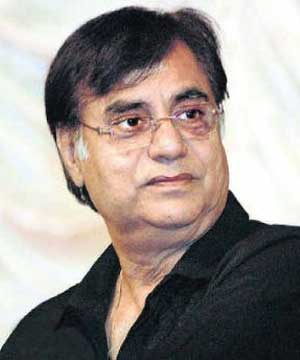Contribute
| Music Review - Na Chitti Na Koyi Sandesh |
Ranjani Saigal
10/13/2011
(This article is sponsored by Sounds Of India)
Jagjit Singh who was almost single handedly responsible for mainstreaming Ghazals died on Oct. 3, 2011. It was a very sad moment for millions of his fans that have been mesmerized by his voice for decades.
Jagjit Singh was born on February 8, 1941 in Sriganganagar, Rajasthan, to Amar Singh Dhiman, a government employee, and Bachan Kaur. He had four sisters and two brothers and was called Jeet by his family.
He was raised as a Sikh by religion. His birth name was Jagmohan but his Sikh father names him Jagjit at the advice of his guru who predicted that he would win over the world (Jag Jit) with his golden voice.
Jagjit began his music training under Pandit Chhaganlal Sharma. He later trained under Ustad Jamal Khan of the Sainia Gharana for six-years and gained knowledge in Khayal, Thumri and Dhrupad forms.
Known as "The Ghazal King", he gained acclaim together with his wife, another renowned Indian Ghazal singer Chitra Singh in 1970's and 80's as the first successful husband-wife duo act in the history of recorded Indian music. Together, they are considered to be the pioneers of modern Ghazal singing and regarded as most successful recording artistes outside the realm of Indian film music. Their combination album on HMV comprising music from films, Arth (Meaning, 1982) and Saath Saath (Together, Along, 1982), holds the record of being India's largest selling album of all time. Sajda (An Offering, 1991), Jagjit Singh's magnum opus double album with Lata Mangeshkar holds the same record in non-film category. He had sung in Punjabi, Hindi, Urdu, Bengali, Gujarati, Sindhi and Nepali languages. He was awarded India's third highest civilian honor, the Padma Bhushan, in 2003 for his contribution to the fields of music and culture.
His songs from the film Arth Jhuki Jhuki Si Nazar", "Koi Yeh Kaise Bataye", "Tere Khushboo Mein Base Khat", "Too Nahin To Zindagi Mein Aur Kya Reha Jayega", "Tum Itna Jo Muskura Rahe Ho" was my first introduction to this maestro. His ability to take words and sing them in a way that allowed us to feel the emotion without even understanding the words made the Ghazal genre very accessible to novices like me. His innovative use of new sounds like guitars and other Western instruments in a manner that does not detract from the authenticity of the singing while adding new dimensions to Ghazals was responsible in large part for his success.
While there were many of his songs that I absolutely loved, his two songs, “Kagaz Ki Kashti†and “Na Chithi na koyi sandesh†were always two that brought tears to my eyes.
He has left us now and we get no letters or messages from where he has gone – “Na Chithi na Koyi Sandeshâ€. The treasure trove of music he has left shall remain as a testimony to the greatness of this legend.
You may also access this article through our web-site http://www.lokvani.com/

